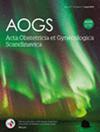Atrioventricular conduction abnormalities are associated with poor outcome following intermittent umbilical cord occlusions in fetal sheep
Abstract
Introduction
Fetal arrhythmias have been described with intrapartum hypoxemia; however, they cannot be accurately diagnosed with currently used fetal heart rate (FHR) monitoring systems due to low resolution and signal averaging. We used a Holter device to record electrocardiogram (ECG) at 250 Hz in term sheep fetuses that developed severe metabolic acidosis induced by intermittent umbilical cord occlusions (UCOs), mimicking human labor contractions. We hypothesized that UCOs leading to worsening fetal metabolic acidosis provoke distinct fetal arrhythmias that could indicate impending fetal death.
Material and Methods
Thirteen pregnant sheep (gestational age 133–135/145 days) were instrumented under general anesthesia. Three electrodes were placed on the fetal chest and connected to a Holter device for continuous ECG recording at a sampling rate of 250 Hz. The fetal axillary artery was catheterized and an inflatable occluder was placed around the umbilical cord. After a 4–5 day recovery, complete UCOs were induced by inflating the occluder for 1 min, followed by deflation for 2 min, until the fetal arterial pH dropped <7.0 and/or base excess (BE) <−16. Thereafter, an emergency cesarean section was performed to deliver the fetus.
Results
Eight sheep fetuses were included in the final analysis. All fetuses had normal baseline arterial blood gases and lactate values. During the first two UCOs, all fetuses demonstrated isolated benign arrhythmias. Three fetuses that developed severe metabolic acidosis after five UCOs showed persistent atrioventricular (AV) conduction abnormalities during the last UCO and its release, requiring cardiopulmonary resuscitation (CPR) at birth. One fetus with third-degree AV block had no detectable QRS complexes at birth, developed ventricular tachycardia and fibrillation (VT/VF) during CPR, and was successfully defibrillated. Five fetuses tolerated ≥10 UCOs before developing severe metabolic acidosis, and none of these showed any persistent AV-conduction abnormalities, though one fetus died after developing VT/VF after the 10th UCO.
Conclusions
Metabolic acidemia induced by intermittent UCOs in term sheep fetuses is associated with various arrhythmias, some of which may be life-threatening. Continuous intrapartum fetal ECG recording at a sample rate of ≥250 Hz coupled with a software capable of automatically detecting significant arrhythmias could enhance intrapartum fetal monitoring in the future.


 求助内容:
求助内容: 应助结果提醒方式:
应助结果提醒方式:


